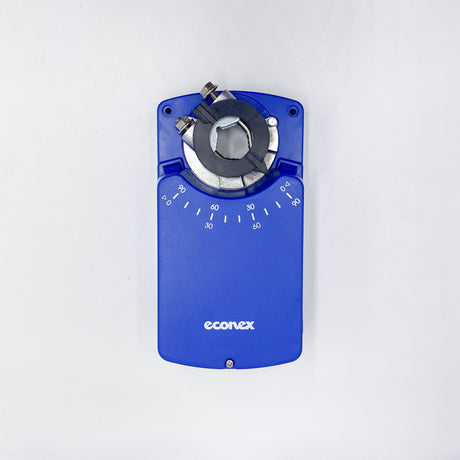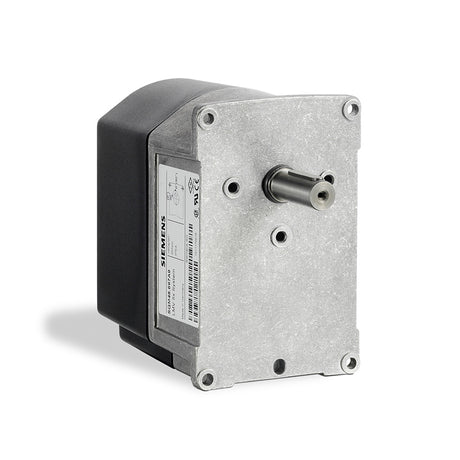FiltersFilter & Sort
Siemens
Siemens SQM33.511A9 Servo motor | Actuator - 24v
3m Cable and Plug Included - Use with LMVxx
1.5 kg
In stock (12 units)£29208£43407Unit price /UnavailableSiemens
Siemens SQN31.762A2700 Damper Actuator
Available for Backorder£23352£34705Unit price /UnavailableSiemens
Siemens SQN31.401A2700 Damper Actuator
Available for Backorder£17786£26431Unit price /UnavailableSiemens
Siemens SQN90.240B2793 Damper Actuator
Synchronous motor - Adjustable Cams - Position Indicator
1.0 kg
Available for Backorder£20631£26217Unit price /UnavailableSiemens
Siemens SQN75.224A21 Damper Actuator
Available for Backorder£14749£21919Unit price /UnavailableSiemens
Siemens SQN30.111A3500 Damper Actuator
Very low stock (2 units)£20677£30730Unit price /UnavailableSiemens
Siemens SQN30.111A2700 Damper Actuator
Available for Backorder£19376£28795Unit price /UnavailableSiemens
Siemens SQM50.543A80B Damper Actuator
3.0 kg
Available for Backorder£47763£88319Unit price /UnavailableSiemens
Siemens SQM48.497B9 Damper Actuator
Available for Backorder£71772£1,11744Unit price /UnavailableSiemens
Siemens SQM40.235A20 Servo Motor | Actuator
Robust NEMA 4 Weatherproof Enclosure
1.0 kg
Available for Backorder£30012£44602Unit price /UnavailableSiemens
2.0 kg
Available for Backorder£1,50237£2,47125Unit price /UnavailableSiemens
For Air Dampers & Control Valves Small to Medium Heat Capacity Burners
1.0 kg
Available for Backorder£13447£19985Unit price /UnavailableEconex
Econex AR2B/A2002-SE2Z 0-10V / 4-20mA 电机 110v/24v IP65
2500 g
Low stock (3 units)£90547Unit price /UnavailableSiemens
Siemens SQN91.570A2793 Damper Actuator
Synchronous motor - Adjustable Cams - Position Indicator
1.0 kg
Available for Backorder£20171£29977Unit price /UnavailableSiemens
Siemens SQN91.140B2799 Damper Actuator
Synchronous motor - Adjustable Cams - Position Indicator
1.0 kg
Available for Backorder£17568£26109Unit price /UnavailableSiemens
Siemens SQN91.140B1799 Damper Actuator
Synchronous motor - Adjustable Cams - Position Indicator
1.0 kg
Available for Backorder£19015£28259Unit price /UnavailableSiemens
Siemens SQN90.560A2793 Damper Actuator
Synchronous motor - Adjustable Cams - Position Indicator
1.0 kg
Available for Backorder£21255£31589Unit price /UnavailableSiemens
Siemens SQN90.350A2799 Damper Actuator
Synchronous motor - Adjustable Cams - Position Indicator
1.0 kg
Available for Backorder£18581£27614Unit price /UnavailableSiemens
Siemens SQN90.240B2799 Damper Actuator
Synchronous motor - Adjustable Cams - Position Indicator
1.0 kg
Available for Backorder£18146£26969Unit price /Unavailable
Where might I need a Damper Motor?
Burner Control
Burner Control
Combustion systems, such as boilers or furnaces, require a precise mixture of fuel and air for efficient combustion. A damper motor can regulate the airflow by adjusting the position of the dampers, ensuring the optimal amount of air is supplied to the burner. This helps achieve proper combustion and maximize fuel efficiency.
Flue Gas Exhaust
Flue Gas Exhaust
After combustion, the flue gases need to be safely discharged from the system. Dampers are used in the flue gas exhaust path, and a damper motor controls their opening and closing. This allows for proper venting of the combustion by-products, maintaining the required draft and preventing the buildup of dangerous gases.
Safety and Control
Safety and Control
In combustion systems, safety is of utmost importance. Damper motors can be integrated with safety controls and sensors to ensure proper functioning of the system. For example, a damper motor can respond to flame detection sensors or pressure switches, instantly closing the dampers in case of a malfunction or unsafe condition.
Turndown Ratios
Turndown Ratios
Some combustion systems may have the ability to modulate their output based on demand. A damper motor can be utilized to control the air supply and adjust the turndown ratio of the burner. This allows for efficient operation of the system across a wide range of loads and ensures optimal combustion performance.
Emissions Control
Emissions Control
Controlling the airflow through the dampers can also help manage emissions in combustion systems. By adjusting the damper position, the amount of excess air supplied to the combustion process can be optimised, leading to reduced emissions of pollutants such as nitrogen oxides (NOx).













